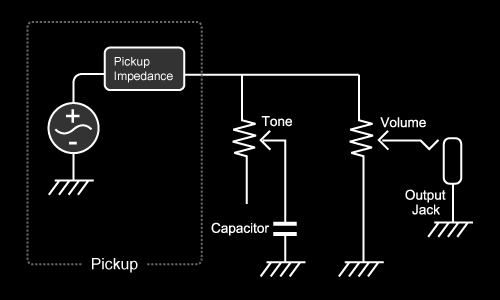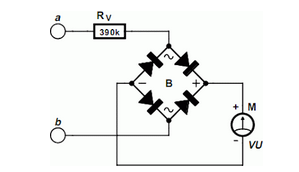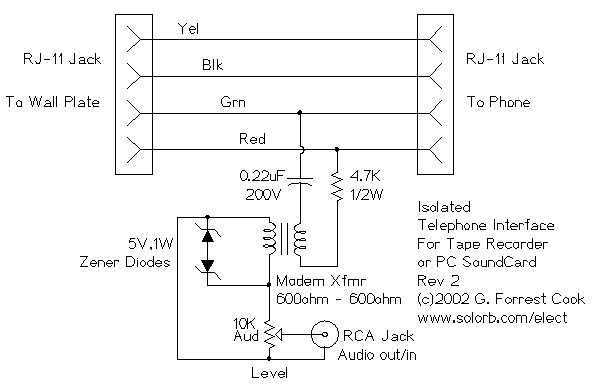
Musical telephone ringer

The core component of the circuit is IC1, the AY-3-1350 melody synthesizer IC from General Instrument. IC2 is a TCM1512 telephone ring detector IC powered by the telephone line. The circuit operates when IC2 detects a ring pulse on the telephone line. The detector rectifies the ring signal internally and outputs a voltage to relay RY1, a single-pole, single-throw (SPST) reed relay with 5-volt contacts, causing its contacts to close. This action pulls pin 12 (the ON/OFF control) of IC1 low (logic "0"), prompting it to output a signal corresponding to the selected tune to transistor amplifier Q2. The amplified signal is then sent to the speaker. The melody plays until it finishes, at which point IC1 returns to standby mode, or until the phone is taken off the hook. Removing the phone from the hook stops the ring pulses to IC2, which opens RY1. When the relay contacts open, pin 12 of IC1 goes high, returning the circuit to standby mode to await the next incoming call.
The circuit features two primary integrated circuits: the AY-3-1350 and the TCM1512. The AY-3-1350 is designed for melody synthesis and can generate multiple tunes by selecting different output pins. Its operation is controlled by the logic level at pin 12, which serves as an ON/OFF control. The TCM1512 functions as a telephone ring detector, effectively monitoring the telephone line for incoming calls.
Upon detecting a ring pulse, the TCM1512 rectifies the AC signal from the telephone line and produces a DC voltage sufficient to activate the relay. The SPST reed relay (RY1) is utilized to isolate the low-voltage circuitry from the high-voltage telephone line, ensuring safe operation. When the relay closes, it connects the control pin of the AY-3-1350 to ground, allowing the IC to start generating the melody.
The transistor amplifier (Q2) is critical for driving the speaker, as the output from the AY-3-1350 is typically insufficient to produce audible sound directly. The amplifier boosts the signal to a level suitable for the speaker, allowing the melody to be heard clearly.
The circuit is designed to revert to standby mode after the melody completes or when the phone is taken off the hook. This dual functionality ensures that the circuit conserves power while remaining ready to respond to subsequent ring pulses. The design effectively integrates melody synthesis with telephone signaling, providing an engaging auditory response to incoming calls.The heart of the circuit is IC1, General Instrument's AY-3-1350 melody-synthesizer IC. IC2 is a TCM1512 telephone ring detector IC that is powered by the telephone line. The circuit's operation begins when IC2 senses a ring pulse on the telephone line. The detector (internally) rectifies the ring signal and then outputs a voltage to relay RY1 (an SPST reed-type relay with 5 volt contacts), causing its contacts to close. That pulls pin 12 (the ON/OFF control) of IC1 low (logic "0"), causing it to output a signal—the selected tune—to transistor amplifier Q2.
The amplified signal is then fed to the speaker. The melody continues to play either until the tune is finished (at which time IC1 returns to the standby mode), or until someone takes the phone off the hook. Taking the phone off the hook discontinues the ring pulses to IC2, which opens RY1. When the relay contacts open, pin 12 of IC1 goes high, returning the circuit to the standby mode to wait for the next incoming phone call.
The circuit features two primary integrated circuits: the AY-3-1350 and the TCM1512. The AY-3-1350 is designed for melody synthesis and can generate multiple tunes by selecting different output pins. Its operation is controlled by the logic level at pin 12, which serves as an ON/OFF control. The TCM1512 functions as a telephone ring detector, effectively monitoring the telephone line for incoming calls.
Upon detecting a ring pulse, the TCM1512 rectifies the AC signal from the telephone line and produces a DC voltage sufficient to activate the relay. The SPST reed relay (RY1) is utilized to isolate the low-voltage circuitry from the high-voltage telephone line, ensuring safe operation. When the relay closes, it connects the control pin of the AY-3-1350 to ground, allowing the IC to start generating the melody.
The transistor amplifier (Q2) is critical for driving the speaker, as the output from the AY-3-1350 is typically insufficient to produce audible sound directly. The amplifier boosts the signal to a level suitable for the speaker, allowing the melody to be heard clearly.
The circuit is designed to revert to standby mode after the melody completes or when the phone is taken off the hook. This dual functionality ensures that the circuit conserves power while remaining ready to respond to subsequent ring pulses. The design effectively integrates melody synthesis with telephone signaling, providing an engaging auditory response to incoming calls.The heart of the circuit is IC1, General Instrument's AY-3-1350 melody-synthesizer IC. IC2 is a TCM1512 telephone ring detector IC that is powered by the telephone line. The circuit's operation begins when IC2 senses a ring pulse on the telephone line. The detector (internally) rectifies the ring signal and then outputs a voltage to relay RY1 (an SPST reed-type relay with 5 volt contacts), causing its contacts to close. That pulls pin 12 (the ON/OFF control) of IC1 low (logic "0"), causing it to output a signal—the selected tune—to transistor amplifier Q2.
The amplified signal is then fed to the speaker. The melody continues to play either until the tune is finished (at which time IC1 returns to the standby mode), or until someone takes the phone off the hook. Taking the phone off the hook discontinues the ring pulses to IC2, which opens RY1. When the relay contacts open, pin 12 of IC1 goes high, returning the circuit to the standby mode to wait for the next incoming phone call.





